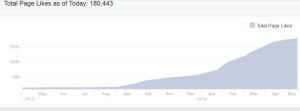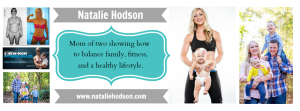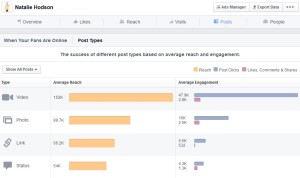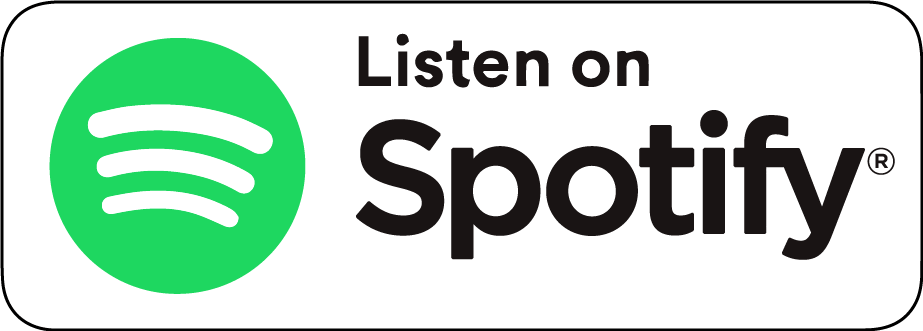I had the pleasure of meeting Natalie Hodson and her daughter Phoenix last year in Las Vegas. Since that time I’ve watched Natalie not only grow, but exponentially grow her following. We spoke a few weeks on on the phone for what seemed like 15 minutes, but was well over an hour about her approach to her social media platform; specifically her Facebook Page. She talked about the importance of being genuine, honest, and vulnerable to the audience. I had the opportunity to follow up and interview her for this feature.
James Patrick: Currently your Facebook audience is has surpassed 180,000 LIKES without spending a single dollar on advertising. When did you first notice your platform start to grow?
Natalie Hodson: The first 1,000 and 10,000 Facebook likes are definitely the hardest to get, I think, for any Facebook page. I noticed that the larger my audience became, the quicker my audience grew. This makes sense because the larger your audience, the more people will engage in your posts, making your posts show up in more people’s news feeds. There are a few things I can pinpoint, however, that really helped my page grow quickly.
1) I changed my cover photo so that someone could tell in a quick 2-second glance exactly what my page was about. Previously I had a photo of me at a Bodybuilding.com event with other athletes. I had it up there because it was kind of a cool photo, but it didn’t really represent what my page was about, and it also wasn’t the correct size for a cover photo so a third of the photo was cut off when people looked at my page.
A few months ago I was playing around with an online photo editing software and put together a collage of photos that I felt really represented what my page was about. I had photos of me, my family, an article I wrote for new moms, and the tagline “Mom of two showing how to balance family, fitness, and a healthy lifestyle.” When I made that change in Jan 2014, I noticed my page started showing up in people’s suggested pages much more often.
I don’t know all the ins and outs of Facebook algorithms, but I suspect it is because when Facebook ‘suggests’ a page to someone they show your cover photo when they suggest it. My cover photo told exactly what my page was about which led to a higher percentage of clicks per view, and so Facebook continued to show my page as a suggested page in people’s newsfeeds.
2) I began making my posts more vulnerable. I’ll talk about this in more depth in a second, but I started showing photos and writing posts that made me feel a little bit nervous to talk about. Instead of always showing the perfect, pretty side of everything, I began writing about and showing the real, raw and honest struggles and victories I felt.
For example, I shared photos of stretch marks during my pregnancies, I showed real-life postpartum progress pictures (not just the best photos in good lighting), I shared with my audience the real-life struggles and insecurities I had about getting back in the gym. Once I started being more honest and open in my posts, I think people really started to connect with what I was saying. When people are engaged with your posts and the ‘talking about’ number on your page is high then your page starts to grow at a quicker pace.
JP: What content were you posting that was resonating more than others and why?
NH: Facebook insights have become a really helpful tool, and I have learned to pay attention to the reports they give me.
I have seen that with my audience, video seems to get the highest reach, followed by photo, then links, and then status updates.
I have also learned that Facebook allows more people to see the videos that you upload directly to Facebook much more than it does YouTube videos.
Photos that I upload to Facebook and photos I share from Instagram seem to reach a similar number of people, and that doesn’t surprise me since Instagram is owned by Facebook.
In the early stages how did you manage your audience and their feedback?
The relationship I’ve had with my audience has always been important to me. I made sure to always respond when people asked questions, and if someone had a question that I felt would be beneficial for a lot of people to see, I would take their question and answer it in a separate post so more people would see the response. I also think it’s really important to understand your audience. I know that the majority of my followers are females ages 18-45 and many have kids. You won’t see me posting sexy nearly-nude photos ever, because my audience wouldn’t respond positively to those types of message (also, I just wouldn’t feel comfortable taking those types of photos). As a result, I don’t have a lot of male athlete-type followers, but I am ok with that.
JP: Often times people are hesitant to be very transparent – but how has that helped you?
NH: I had a chance to listen to Brene Brown speak in person last year and her talk on the power of vulnerability really resonated with me and changed the way I approach many situations. If you haven’t watched her Tedx Talk, go do it right now. At one point it was the most viewed Ted Talk ever, and she also has a great book called Daring Greatly. What I learned from her, and also what I’ve seen in my own work through my social media and my blog, is that people love authenticity and transparency.
One of my favorite parts of Brene’s book is when she asks, “What is authenticity? We may not know how to define it, but we certainly know it when we see it. In fact, when we are in the presence of an authentic person, many of us can even feel it in our bones. We gravitate toward people whom we perceive as honest, real and sincere. We love women who radiate warmth and that “down to earth” feeling. We gather around the people who can “tell it like it is” and laugh at themselves in the process.”
I have thought a lot about these words, and I’ve realized that I can’t be authentic and prideful at the same time. I remember the very first time I shared something that made me feel vulnerable – it was a photograph of the stretch marks I got during my first pregnancy. I sat in front of my computer for a good 30 minutes before I got the courage to click ‘submit’ and for the first 20 seconds I kept refreshing my browser, deciding if I should just delete the post or not.
I was so surprised when the response from people was so positive. I realized that posting images and sharing thoughts that made me feel vulnerable helped other people find something they could relate to me with, and also started to build my confidence in the process. Sharing these types of photos and posts are not nearly as scary for me as they used to be.
JP: Unfortunately many will be unauthentic in their posts trying to appear that they are “relatable” to their audience. That seems to be a new trend, trying to fake relatability. Can you talk about the importance of being genuine?
NH: You can’t be genuine when you are desperately trying to manage and control how others think of you. I try to post the good along with the not-so-good so that people can really get a feel for my voice. I try to talk with my audience the same way I would talk with my sisters or my best friend. I also try not to just post for the sake of posting. If I don’t feel motivated or inspired, I will either share that with my audience, or I just won’t post.
Coincidentally, a lot of my best posts happen while I am working out. Many times, my workout is the only time in the day that I’m not being interrupted by my kids every few seconds and that’s usually the time I feel most encouraged and inspired. I write a lot of my posts in shorthand form on the notes section of my iPhone and then fill in the blanks later and post it.
JP: What did you learn about engagement and how do you implement that?
NH: I’ve found that when the ‘talking about’ number is high, your posts will consistently reach a high number of people, so take advantage of that. Sometimes I will make a post that really gets a lot of shares, which increases my ‘talking about’ number because more people are reached. I try to make sure I post 1-2 times a day when that number is high, because when it drops a few days after that far-reaching post, not as many people will see your posts.
I’ve also learned that it is against Facebook policy to make ‘sharing’ a photo or status a qualification as a contest or giveaway. That seems crazy because you see people do it every day, but I make sure to stick with the rules. I would be crushed if Facebook decided to shut down my page because I broke one of their Pages rules.
Another thing I want to touch on here is engagement from a business standpoint. My page is fairly easy to show the personal side of things, because that is what I am promoting. Businesses, however, sometimes have a harder time with that. For example, my dad runs an insurance company and so he can’t post things I could such as, ‘our family’s healthy dinner.’ However, I do encourage businesses to share ‘behind the scenes’ type photos. These are the types of things that make your audience feel connected with you and see as more than just a big corporation, but rather it helps people put a face with the business name. For example, I encouraged my dad to post pictures of him at the golf course with a client, a quick picture of his employees all headed into a team meeting, or even a photo of him working behind his computer – imagine my 50+ year old dad taking selfies.
JP: What do you feel are common mistakes made by those who are not getting the engagement they hope for?
NH: Making posts all about you and not finishing posts with a call to action.
It’s a fine line between sharing what is working for you, or sharing your own work, and coming across as vain in your posts – or even boring. Think of each post that you make on social media similar to a face-to-face conversation with someone. Would you only talk about yourself if you were talking to someone face-to-face? Maybe. But the most natural conversations are where you talk about yourself a little and ask questions about the other person. I try to end each post with a call to action, and this is usually in the form of a question. A few examples of things I might ask people things are: Have you ever felt this way? How would you respond in this situation? Do you have any ideas to share? I would love to hear your thoughts in the comments below. Do you have any advice for me?
JP: What are your current goals with your audience moving forward?
NH: I have my hand in a lot of exciting projects right now. I am currently revamping my website with a brand new layout, new photos, and will be releasing my own training programs and members-only section on my website. This will be done soon within the next 1-2 months. My hope is that I can continue to cultivate the community feel we have on my Facebook page and website as my page continues to grow.
Special thanks to Natalie for being a part of this interview and for sharing her insights. Be sure to check out both her Facebook Page and her Website.
James Patrick
jamespatrick.com
facebook.com/jamespatrickphotography
instagram @jpatrickphoto








I have actually spoke to Natalie through her facebook page. She is like a sister and is very supportive of moms and those striving for a healthier lifestyle. She is quick to respond to any questions I have and I have even tried some of the products that she uses. She seems like someone I would love to hang out with on a regular basis. She is very genuine in her getting information out that will help others.
Michelle Harmon
Thanks so much for the comment Michelle! So glad you liked the feature!